Pioneer S-HF11C Handleiding
Bekijk gratis de handleiding van Pioneer S-HF11C (8 pagina’s), behorend tot de categorie Speaker. Deze gids werd als nuttig beoordeeld door 60 mensen en kreeg gemiddeld 4.5 sterren uit 30.5 reviews. Heb je een vraag over Pioneer S-HF11C of wil je andere gebruikers van dit product iets vragen? Stel een vraag
Pagina 1/8

1
Thank you for buying this Pioneer product. Please read through
these operating instructions so you will know how to operate your
model properly. After you have finished reading the instructions,
put them away in a safe place for future reference.
Before you start
• The nominal impedance of this speaker system is 8 ohms.
Connect the speaker system to an amplifier with a load
impedance ranging from 4 to 16 ohms (a model with
“4 – 16 ” displayed on the speaker output terminals).Ω
• Do not touch the speaker cones as they are easily damaged.
In order to prevent damage to the speaker system resulting from
input overload, please observe the following precautions:
• Do not supply power to the speaker system in excess of the
maximum permissible input.
• When connecting or disconnecting anything in your AV
system, make sure the amplifier is switched off.
• When using a graphic equalizer to emphasize loud sounds in
the high-frequency range, do not use excessive amplifier
volume.
• Do not try to force a low-powered amplifier to produce loud
volumes of sound (the amplifier’s harmonic distortion will be
increased, and you may damage the tweeter).
Caution: installation
• Do not place the speakers on an unstable surface. It could
present a hazard if it falls, as well as damaging the equip-
ment.
• Switch off and unplug your AV equipment and consult the
instructions when connecting up components. Make sure you
use the correct connecting cables.
• Do not put a TV or other AV equipment on top of these
speakers. It could present a hazard if it falls, as well as
damaging the equipment.
• Do not attach the speakers to the wall or ceiling, or place them
in a high location. If the speaker grilles are not properly
attached, they could fall off, causing injury.
Caution: in use
• Don’t use the speakers to output distorted sound for long
periods of times. This can result in a fire hazard.
• Do not sit or stand on the speakers or let children play on the
speakers.
• Do not put large or heavy objects on top of the speakers.
WARNING: Handling the cord on this product or
cords associated with accessories sold with the
product will expose you to lead, a chemical known to
the State of California and other governmental
entities to cause cancer and birth defects or other
reproductive harm.
D36-P4_En
Wash hands after handling
Installing your speakers
Sounds played through speaker systems are easily affected in
subtle ways by the conditions in the listening space.
•These speakers are bookshelf-type speakers which will give
their best performance when placed on a solid, level surface
off the floor. Placing the speakers directly on the floor will
result in boomy, undefined sound, and we strongly recom-
mend using speaker stands for optimal performance. Ideally,
the tweeters should be at about ear level when seated in your
listening position.
• Do not attach these speakers to the wall or ceiling. They may
fall off and cause injury.
Pioneer cannot take responsibility for injuries or accidents
arising from improper mounting of these speakers on a wall or
ceiling.
• Speakers are heavy, so make sure the surface where you
install the speakers is solid. For good sound, the speakers
should be about 20cm away from the back wall and at least
50cm away from the side wall.
50cm 20cm
*Illustration shows S-HF21-LR
• ’ If you re using these speakers for your TV sound, install them
at equal distances either side of the TV and point them in the
same direction as the TV.
• If the room has a lot of reverberation, we recommend hanging
heavy fabric on the walls, and/or putting a carpet on the floor
to damp the sound. For best results, cover walls completely.
•Do not place the speaker where they will be in direct sunlight,
and avoid positioning them near heaters and air conditioners.
This may cause warping and discoloration of the speaker
cabinet and damage the speakers.
•These speakers are heavy. Placing them on an unstable
surface is dangerous, and should be avoided.
Not applicable to S-HF11C
• Place the speakers equal distances from your listening
position for good stereo sound. Use speaker cords of the
same length for each speaker.
50 60– º
*Illustration shows S-HF21-LR
www.pioneerelectronics.com
S-HF11C S-HF21-LR S-HF31-LR S-HF41-LR
OPERATING INSTRUCTIONS
SPEAKER SYSTEM
MODE D’EMPLOI
ENCEINTES ACOUSTIQUES

2
Pioneer assumes no liability whatsoever for damages resulting
from assembly, improper mounting, insufficient reinforce-
ment, misuse of the product, acts of nature, etc.
Choosing speaker cables
These speakers do not include speaker cables used for connecting
to a stereo. Note the following when selecting speaker cables.
•Use heavy-gauge speaker cable if possible, and keep the
cables to the minimum necessary length.
•If the length of cable required for the left and right speakers
require cables differs, use cables of the same length, matched
to the longer distance.
•Cables have differing characteristics. Keep this in mind when
using any cable.
•Select cables with as little resistance as possible, and make
sure the cables to the speaker terminals and amp are firm and
secure.
Connecting to an amplifier
Before connecting to your amplifier, make sure that the amp is
switched off.
Make sure that you match up the speaker terminals on the
speakers with those on your amplifier so that the positive (+)
terminals and negative ( ) terminals are paired.–
1 Twist off the protective shielding on the ends of the
speaker cable.
Twist together any stray strands of speaker wire.
2 Insert the speaker cable as shown.
Connect the speaker cables to the input terminals on the backs of
the speakers. For input terminal polarity, red is positive (+) and
black is negative (–).
S-HF41-LR speaker system
On the back of the receiver, loosen a speaker terminal, insert
the exposed wire, then tighten the terminal.
S-HF11-C / S-HF21-LR / S-HF31-LR speaker system
On the back of the speaker, push open a tab, insert the
exposed wire, then release the tab to secure the wire.
Red (+)
Black ( )–
3 Connect the other end of the speaker cable to the speaker
terminals on your amplifier.
S-HF41-LR speaker system only:
You can also use banana plugs to connect up the speaker.
•After connecting the plugs, pull lightly on the cables to make
sure that the ends of the cables are securely connected to the
terminals. Poor connections can create noise and interrup-
tions in the sound.
•If the cables' wires happen to be pushed out of the terminals,
allowing the wires to come into contact with each other, it
places an excessive additional load on the amp. This may
cause the amp to stop functioning, and may even damage the
amp.
Detatching and replacing the front grille
The front grille of this speaker system is removable. Proceed as
follows:
1 Hold both sides (top/bottom or left/right) of the grille,
and pull it towards you to detach it from the speaker system.
2 To replace the grille, align the holes in the grille’s corners
with the projections on the front of the speaker, and push
each of the corners into place.
Magnetic shielding
This speaker system is magnetically shielded. However, depending
on the installation location, color distortion may occur if the
speaker system is installed extremely close to the screen of a
television set.
If this happens, turn off the television, then turn it on again after 15
to 30 minutes. If the problem persists, place the speaker system
away from the television set.
Cleaning the speaker cabinet
With normal use, wiping with a dry cloth should be sufficient to
keep the cabinet clean. If necessary, clean with a cloth dipped in a
neutral cleanser diluted five or six times with water, and wrung out
well. Do not use furniture wax or cleansers.
Never use alcohol, thinners, benzine, insecticide sprays or other
chemicals on or near this unit since these will corrode the
surfaces.
Striped half of speaker
cable to positive (+)
speaker terminal
Other half of speaker
cable to negative (–)
speaker terminal

3
Specifications
S-HF11C
Enclosure ................................................... Bass-reflex bookshelf type
(magnetically shielded)
Configuration ................................................................................ 2-way
Woofer .......................................... 13 cm (5
1/4 inch) cone type x 2
Tweeter ........................................ 2.5 cm (1 inch) semi dome type
Nominal impedance ........................................................................ 8 Ω
Frequency response ............................................................ 55~20 kHz
Sensitivity ...................................................................................... 85 dB
Maximum power ......................................................................... 100 W
Exterior dimensions (mm) ................ 400 (W) x 150 (H) x 158 (D) mm
153/4 (W) x 57/8 (H) x 61/4 (D) in.
Weight ....................................................................3.5 kg / 7 lbs. 11 oz.
S-HF21-LR
Enclosure ................................................... Bass-reflex bookshelf type
(magnetically shielded)
Configuration ................................................................................ 2-way
Woofer ................................................ 13 cm (5
1/4 inch) cone type
Tweeter ........................................ 2.5 cm (1 inch) semi dome type
Nominal impedance ........................................................................ 8 Ω
Frequency response ............................................................ 55~20 kHz
Sensitivity ...................................................................................... 80 dB
Maximum power ......................................................................... 100 W
Exterior dimensions (mm) ................. 150(W) x 260 (H) x 158 (D) mm
57/8 (W) x 101/4 (H) x 61/4 (D) in.
Weight ......................................... 2.1 kg / 4 lbs. 10 oz. (each speaker)
S-HF31-LR
Enclosure ................................................... Bass-reflex bookshelf type
(magnetically shielded)
Configuration ................................................................................ 2-way
Woofer ................................................ 16 cm (6
1/2 inch) cone type
Tweeter ........................................ 2.5 cm (1 inch) semi dome type
Nominal impedance ........................................................................ 8 Ω
Frequency response ............................................................ 50~20 kHz
Sensitivity ...................................................................................... 82 dB
Maximum power ......................................................................... 120 W
Exterior dimensions (mm) ................ 195 (W) x 303 (H) x 199 (D) mm
711/16 (W) x 1115
/16 (H) x 713/16 (D) in.
Weight ......................................... 3.3 kg / 6 lbs. 13 oz. (each speaker)
S-HF41-LR
Enclosure ................................................... Bass-reflex bookshelf type
(magnetically shielded)
Configuration ................................................................................ 3-way
Woofer .................................................... 20 cm (8 inch) cone type
Medium .................................................. 10 cm (4 inch) cone type
Tweeter ........................................ 2.5 cm (1 inch) semi dome type
Nominal impedance ........................................................................ 8 Ω
Frequency response ............................................................ 40~20 kHz
Sensitivity ...................................................................................... 84 dB
Maximum power ......................................................................... 160 W
Exterior dimensions (mm) ................ 251 (W) x 504 (H) x 299 (D) mm
97/8 (W) x 1913/16 (H) x 113/4 (D) in.
Weight ........................................ 7.1kg / 15 lbs. 10 oz. (each speaker)
Specifications and design subject to possible modification
without notice, due to improvements.
Published by Pioneer Corporation.
Copyright © 2005 Pioneer Corporation.
All rights reserved.
S001_En
Selecting fine audio equipment such as the unit
you ve just purchased is only the start of your ’
musical enjoyment. Now it s time to consider how ’
you can maximize the fun and excitement your
equipment offers. This manufacturer and the
Electronic Industries Association s Consumer ’
Electronics Group want you to get the most out of
your equipment by playing it at a safe level. One that
lets the sound come through loud and clear without
annoying blaring or distortion-and, most importantly,
without affecting your sensitive hearing.
Sound can be deceiving. Over time your hearing
“ ”comfort level adapts to higher volumes of sound.
So what sounds normal can actually be loud and “ ”
harmful to your hearing. Guard against this by
setting your equipment at a safe level BEFORE your
hearing adapts.
To establish a safe level:
• Start your volume control at a low setting.
• Slowly increase the sound until you can hear it
comfortably and clearly, and without distortion.
Once you have established a comfortable sound
level:
• Set the dial and leave it there.
Taking a minute to do this now will help to prevent
hearing damage or loss in the future. After all, we
want you listening for a lifetime.
We Want You Listening For A Lifetime
Used wisely, your new sound equipment will
provide a lifetime of fun and enjoyment. Since
hearing damage from loud noise is often
undetectable until it is too late, this manufacturer
and the Electronic Industries Association s ’
Consumer Electronics Group recommend you avoid
prolonged exposure to excessive noise. This list of
sound levels is included for your protection.
Decibel
Level Example
30 Quiet library, soft whispers
40
Living room, refrigerator, bedroom away from traffic
50 Light traffic, normal conversation, quiet office
60 Air conditioner at 20 feet, sewing machine
70 Vacuum cleaner, hair dryer, noisy restaurant
80
Average city traffic, garbage disposals, alarm clock
at two feet.
THE FOLLOWING NOISES CAN BE DANGEROUS
UNDER CONSTANT EXPOSURE
90
Subway, motorcycle, truck traffic, lawn mower
100 Garbage truck, chain saw, pneumatic drill
120 Rock band concert in front of speakers,
thunderclap
140 Gunshot blast, jet plane
180 Rocket launching pad
Information courtesy of the Deafness Research Foundation.
Product specificaties
| Merk: | Pioneer |
| Categorie: | Speaker |
| Model: | S-HF11C |
Heb je hulp nodig?
Als je hulp nodig hebt met Pioneer S-HF11C stel dan hieronder een vraag en andere gebruikers zullen je antwoorden
Handleiding Speaker Pioneer

5 Juni 2025
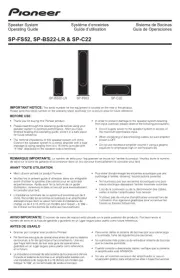
25 April 2025

13 December 2024

13 December 2024

13 December 2024

13 December 2024

13 December 2024

13 December 2024

13 December 2024

13 December 2024
Handleiding Speaker
- Xantech
- Oppo
- Ibiza Sound
- Soundsation
- Stabo
- Acoustic Research
- Advance
- Nokia
- Dynacord
- SiriusXM
- Etekcity
- GGMM
- Martin Logan
- Showtec
- SBS
Nieuwste handleidingen voor Speaker
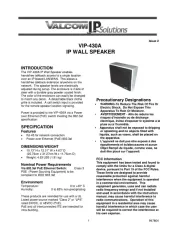
30 Juli 2025
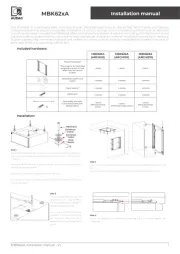
30 Juli 2025
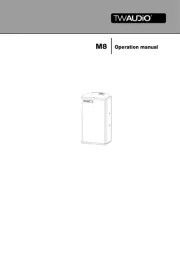
30 Juli 2025
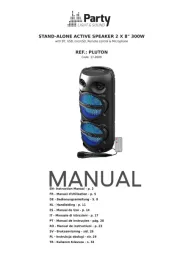
30 Juli 2025
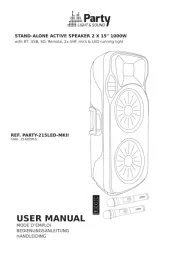
30 Juli 2025
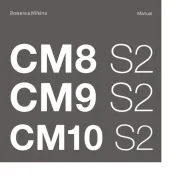
29 Juli 2025
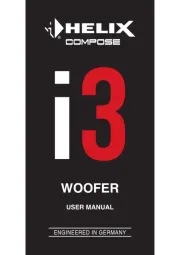
29 Juli 2025
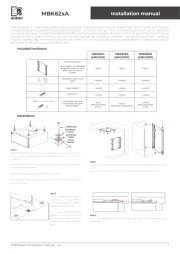
29 Juli 2025
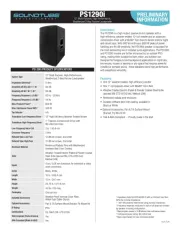
29 Juli 2025
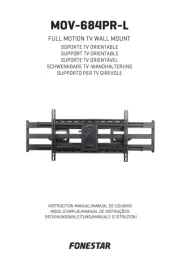
29 Juli 2025